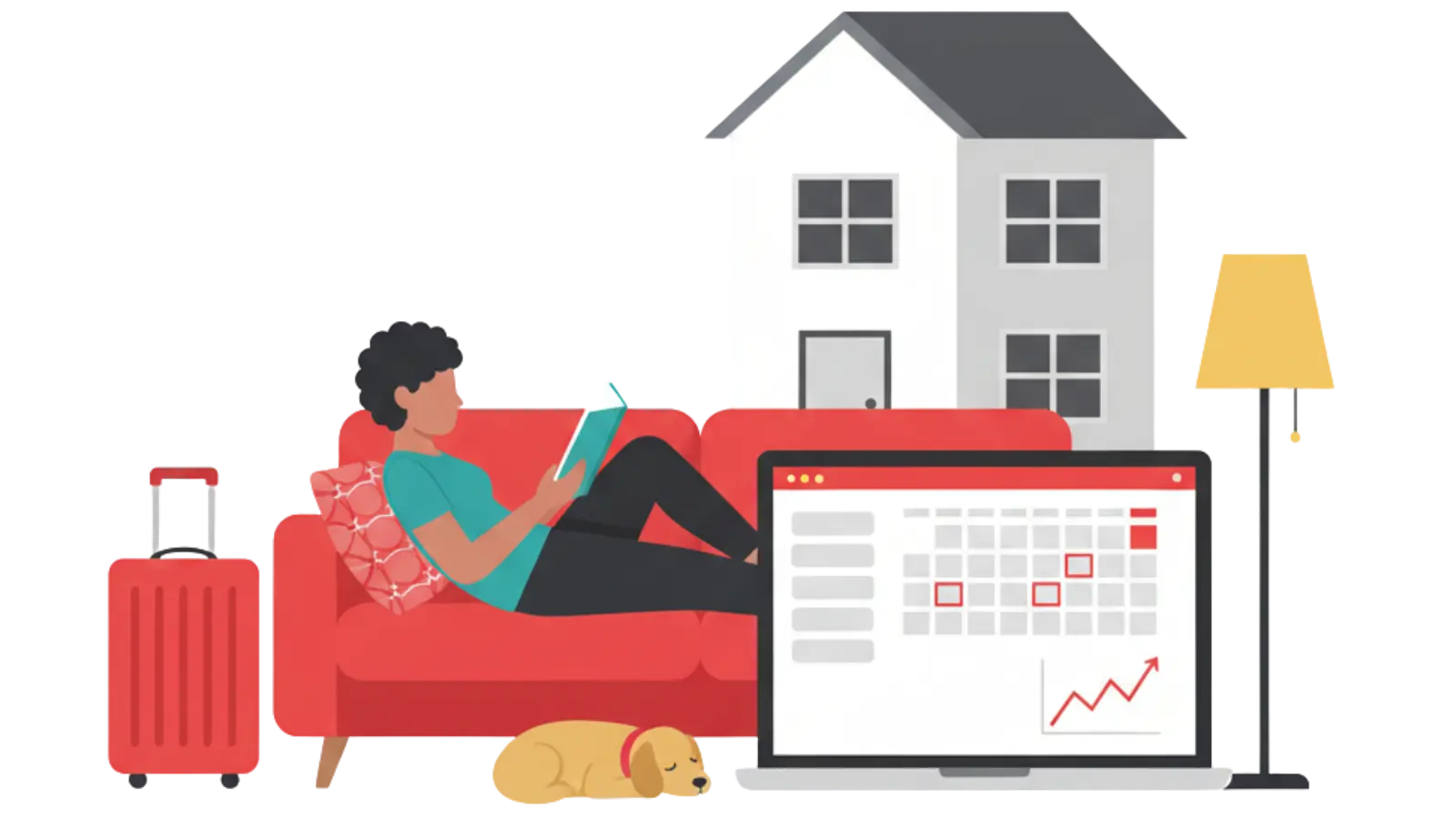Updated : Oct 14, 2025
As the short-term rental landscape matures, more hosts are rethinking what “flexibility” truly means. The pandemic reshaped how people live and work, accelerating remote jobs, long business assignments, and lifestyle travel. In response, a new segment has gained traction: mid-term furnished rentals, designed for guests staying from one month to a year who need a fully equipped home rather than a hotel-style stay.
For independent hosts and real-estate investors, mid-term rentals offer the best of both worlds: higher returns than long-term leases and less turnover than nightly stays. They attract a diverse audience, including traveling nurses, digital nomads, insurance clients, and relocating professionals, who value comfort and stability. With tools like PriceLabs, you can easily identify markets with rising mid-term demand and optimize pricing and occupancy.
What Are Mid-Term Furnished Rentals?
A mid-term furnished rental is a fully equipped home rented for 30 days to 12 months — a middle ground between short-term vacation stays and year-long leases. Guests bring their suitcases, not their furniture.
Typical guests include:
- Traveling nurses and healthcare professionals
- Digital nomads and remote workers
- Families relocating or renovating
- Corporate travelers and insurance clients
Why hosts love them:
- Longer stays = fewer turnovers and cleaning cycles
- Higher income than traditional leases
- More predictable, respectful tenants
- Lower vacancy than short-term listings during low seasons
Furnishing the space — from Wi-Fi and kitchenware to bedding — is what sets these rentals apart. Guests expect a ready-to-live-in experience.
How Mid-Term Rentals Differ From Short-Term and Long-Term Rentals
While all rental models generate income, the commitment level, guest type, and management effort vary drastically. Mid-term rentals sit in the sweet spot between flexibility and stability — a growing preference among hosts seeking consistent occupancy without daily management stress.
Here’s how they compare:
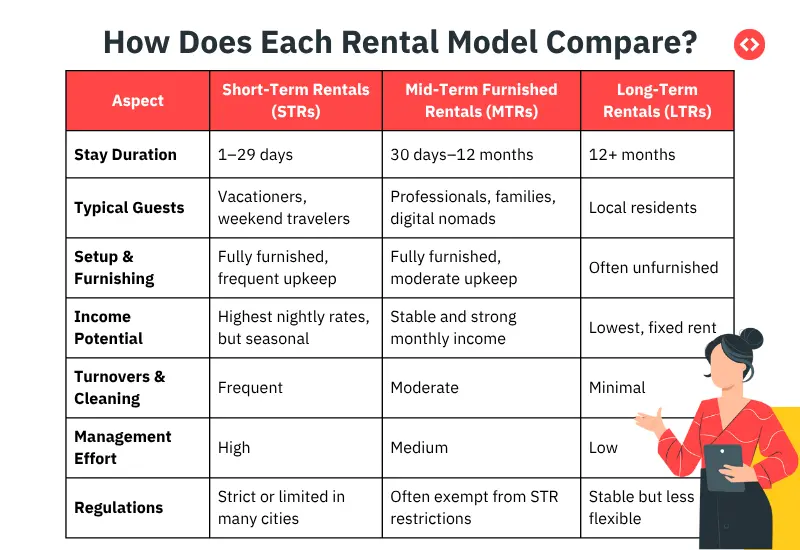
Which Is Better?
The “best” model depends on your market, property type, and hosting capacity:
- Short-term rentals excel in tourist-heavy areas or seasonal markets where nightly rates spike.
- Long-term rentals are ideal for investors seeking low-maintenance, predictable income.
- Mid-term rentals, however, are emerging as the most balanced model — offering longer occupancy, steady income, and fewer compliance challenges than short stays.

With PriceLabs’ Market Dashboards, you can analyze how each segment performs in your area. Compare occupancy trends, median rates, and booking patterns to see whether a mid-term strategy could outperform your current setup. For many hosts, blending short-term and mid-term stays—depending on seasonality—delivers the most resilient results.
Stay Ahead of the Market and Find the Right Amenities that Your Potential Guests Want Using PriceLabs Market Dashboard.
Use PriceLabs Market Dashboard and Neighborhood Data to track competitor pricing and demand shifts and analyze past performance to set a strong pricing strategy for your property.
Create your Market Dashboard NowWho Typically Books Mid-Term Rentals?
Unlike vacationers chasing weekend getaways, mid-term guests are travelers with purpose. They stay longer, expect stability, and value the comfort of a real home. Understanding these segments helps you tailor your property setup, pricing, and listing descriptions effectively.
Here are the most common mid-term renter profiles:
- Traveling Nurses & Medical Staff: Assigned to hospitals for 8–13 weeks at a time, these guests look for clean, fully furnished homes close to work. They’re reliable, often booked through platforms like Furnished Finder, and prefer utilities included in rent.
- Remote Workers & Digital Nomads: A growing segment post-2020, these professionals blend work and travel. They favor quiet neighborhoods, strong Wi-Fi, and work-friendly setups like desks and ergonomic chairs.
- Corporate & Relocation Clients: Employees relocating or on extended projects prefer mid-term leases because they’re hassle-free and flexible. Some companies partner directly with hosts for recurring stays.
- Insurance & Temporary Housing Clients: After property damage or repairs, insurance companies often fund temporary housing for policyholders — typically for 1–6 months. These guests prioritize fully functional, move-in-ready homes.
- Students & Academic Visitors: Graduate students, visiting professors, and researchers need semester-long rentals, making mid-term options near universities particularly profitable.
Why These Guests Matter
Mid-term tenants are often:
- Low-maintenance and financially stable
- More respectful of property house rules
- Looking for seamless move-ins (no furniture or utilities hassle)
For hosts, this means fewer guest issues, longer occupancy, and reduced turnover costs — all while keeping nightly rates significantly higher than traditional long-term leases.
Benefits of Mid-Term Furnished Rentals for Hosts and Investors
Mid-term furnished rentals have moved from niche to mainstream because they combine the profitability of short-term stays with the stability of long-term leases. For hosts and investors, the advantages go well beyond occupancy rates.
1. Steadier, More Predictable Income
While short-term bookings can fluctuate with seasons, mid-term guests typically stay one to six months, providing consistent cash flow. Monthly income is usually higher than a long-term lease but far less volatile than nightly rates.
Pro tip: Use PriceLabs Market Dashboards to track how mid-term average daily rates compare with local short-term listings. You’ll often find opportunities in off-season months when tourism dips but corporate and relocation demand stays strong.
Stay Ahead of the Market and Find the Right Amenities that Your Potential Guests Want Using PriceLabs Market Dashboard.
Use PriceLabs Market Dashboard and Neighborhood Data to track competitor pricing and demand shifts and analyze past performance to set a strong pricing strategy for your property.
Create your Market Dashboard Now2. Fewer Turnovers & Lower Operating Costs
Short-term rentals demand frequent cleanings, key exchanges, and restocking. With mid-term stays, you might only manage a handful of turnovers per year.
- Save time on check-ins and maintenance
- Reduce cleaning and laundry expenses
- Lower wear-and-tear on furniture
This makes it easier to self-manage without relying on property management companies.
3. Better Tenant Quality
Mid-term tenants — such as traveling professionals or families — tend to be responsible, stable, and easier to communicate with. They often treat the property as their own home, leading to:
- Fewer disputes
- Timely rent payments
- Respect for house rules
4. Fewer Regulatory Restrictions
Many cities have cracked down on short-term rentals, limiting stays under 30 days. Mid-term leases (30+ days) often bypass those short-term restrictions, allowing hosts to keep operating legally while maintaining flexibility.
5. Flexibility for Investors
You can easily switch between rental strategies throughout the year:
- Short-term during high season (tourists, events)
- Mid-term during off-season (corporate, relocation)
With PriceLabs’ Dynamic Pricing, you can automate this mix — adjusting rates automatically based on local demand, seasonality, and length-of-stay patterns.
6. Potential Tax Advantages
In some markets, mid-term rentals qualify as investment properties rather than hospitality businesses, offering depreciation and deductible expense benefits. Always confirm with your local tax advisor, but this can often increase your overall ROI.
How to Set Up a Mid-Term Furnished Rental
Creating a successful mid-term furnished rental is about balance—comfort for guests and stability for you. Beyond setting up furniture and listing online, you’ll need to plan for regulations, furnishing standards, insurance, and data-driven pricing.
1. Understand Local Regulations and Lease Requirements
Mid-term rentals (30+ days) often fall outside short-term rental restrictions, but regulations vary by city or state.
- Check local housing codes or HOA rules before listing.
- Use a mid-term rental lease agreement template or consult a lawyer to include clauses for furnishings, utilities, cleaning responsibilities, and notice periods.
- Confirm whether your property type (condo, apartment, ADU) allows mid-term leases.
Mid-term contracts can also be flexible—you can include monthly renewals, security deposits, and cleaning fees to match your operations.
2. Furnish for Comfort and Functionality
Mid-term tenants expect a ready-to-live-in home, not a vacation rental setup. Focus on practicality, quality, and comfort.
Essentials checklist:
- Fully equipped kitchen (appliances, cookware, utensils
- Comfortable mattress, quality linens, and extra bedding
- Washer/dryer and cleaning supplies
- Reliable high-speed Wi-Fi and a dedicated work area
- Streaming options or smart TV
- Utilities included in the rent
If your target audience includes corporate travelers or remote workers, consider upgrades such as ergonomic furniture, blackout curtains, and additional storage—these justify premium monthly rates.
3. Get the Right Insurance
Not all insurance policies cover mid-term rentals. Look for specialized landlord or mid-term rental insurance that includes:
- Liability coverage
- Protection against tenant damage
- Loss-of-income coverage
Proper coverage helps you stay compliant and financially secure.
4. Price Strategically Using Data
Pricing a mid-term rental requires precision—you’re not charging nightly, but you shouldn’t undercut your market either.
With PriceLabs, you can:
Use Market Dashboards to assess average rates and occupancy for 30+ day stays.
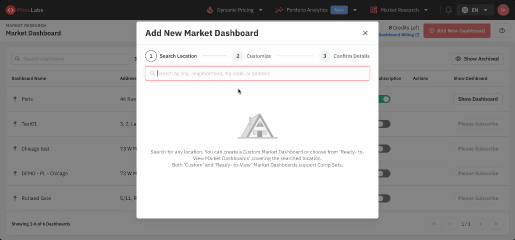
Explore Neighborhood Data to identify local demand fluctuations.

Build Comp Sets to benchmark your property against similar mid-term listings.

Setting a minimum stay of 30 days and enabling dynamic pricing in PriceLabs ensures your rates adjust automatically based on demand, lead time, and seasonality.
Enhance Vacation Rental Revenue with Dynamic Pricing!
Put your pricing strategy on autopilot with PriceLabs’ Dynamic Pricing & Revenue Management. Improve occupancy & boost rental income with nightly rates that reflect current market conditions, seasonality factors & competitor’s performance.
Start Your Free Trial Now5. Optimize Your Listing
Your listing should immediately communicate comfort and convenience. Highlight features that appeal to mid-term tenants—workspace, laundry, parking, and inclusive utilities.
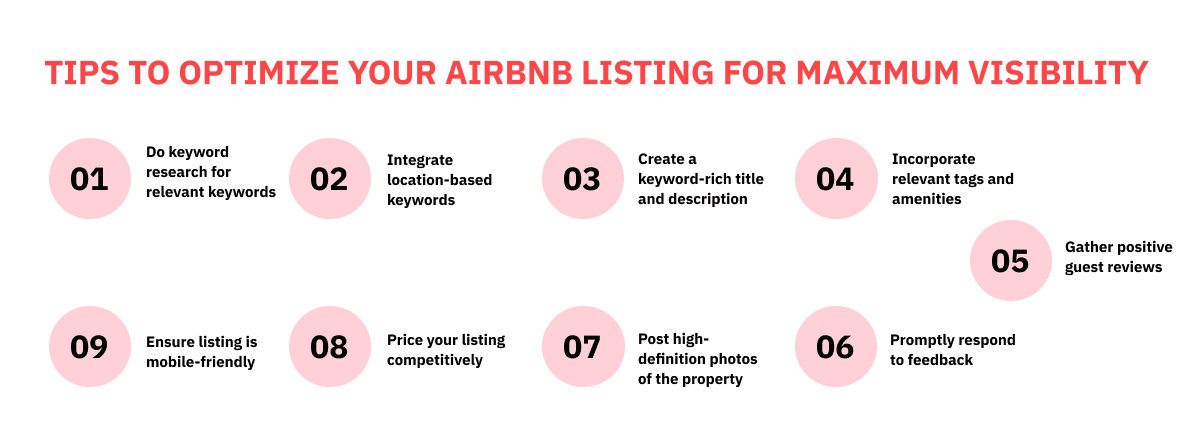
Tips for visibility:
- Use phrases like “fully furnished,” “30+ day stays,” or “corporate-ready housing.”
- Mention proximity to hospitals, business districts, or major employers.
- Include clear photos of all rooms and amenities that emphasize space and functionality.
Once your mid-term rental is properly furnished, insured, and priced, it becomes a steady, low-maintenance asset in your portfolio—especially when optimized with PriceLabs’ data-driven pricing and occupancy tools.
Where to List Your Mid-Term Rental
Mid-term rentals are becoming increasingly mainstream, and hosts now have multiple platforms to reach their target audience. Unlike short-term listings that rely heavily on daily bookings, mid-term rentals thrive on specialized platforms and optimized visibility.
1. Airbnb (30+ Day Stays)
Airbnb allows hosts to set a minimum stay length of 30 days, making it one of the easiest places to test mid-term demand. It attracts remote workers, families, and digital nomads looking for flexible, furnished housing.
To stand out:
- Use the “Monthly Stay” label and list all included amenities.
- Offer discounts for 30-, 60-, or 90-day stays to encourage commitment.
- Keep your calendar open year-round for extended inquiries.
When paired with PriceLabs Dynamic Pricing, you can automatically adjust rates for longer stays while staying competitive against nearby listings.
2. Furnished Finder
Furnished Finder specializes in traveling nurses and professionals seeking stays of one to six months. Listings are fully furnished and verified, and guests typically pay directly (not through the platform).
Advantages:
- Stable guest base (mostly corporate and healthcare professionals)
- Less seasonality than tourism-based markets
- Minimal platform fees for hosts
This is ideal for hosts located near hospitals, business hubs, or universities.
3. Zillow, Apartments.com, and Other Housing Portals
Traditional long-term rental sites now support furnished mid-term listings. This gives you access to relocation clients, families, and temporary insurance tenants who may not use Airbnb.
To maximize leads:
- List your property as “furnished” and “available monthly.”
- Clearly state rent includes utilities and Wi-Fi.
- Add professional photos that highlight comfort and space.
4. Corporate Housing Platforms
Sites like Blueground, Zeus Living, and Landing cater to business travelers and relocation agencies. They typically expect higher furnishing standards but provide a streamlined, low-maintenance booking process once approved.
If you’re an investor with multiple units, these platforms can secure repeat corporate contracts and long-term occupancy.
5. Direct Bookings and Local Partnerships
Once you’ve tested demand through major platforms, consider building a direct booking website or partnering with local employers, hospitals, or insurance agencies for recurring mid-term placements.
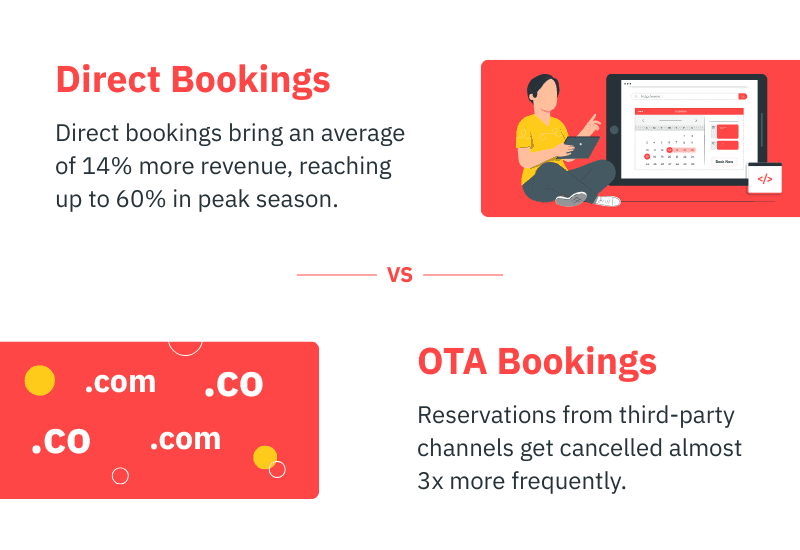
- Direct bookings reduce platform fees and build guest loyalty.
- Partnerships ensure stable, year-round demand.
- You can sync rates and minimum-stay rules through PriceLabs across your booking channels to maintain consistency.
Listing across two or three well-chosen platforms increases exposure without complicating management. By integrating PriceLabs, you can centralize pricing and adjust dynamically based on length of stay, occupancy trends, and seasonality across all platforms.
Tips for Managing a Mid-Term Rental
Once your mid-term furnished rentals are live, success depends on consistent communication, maintenance, and smart automation. Unlike short-term stays, these guests treat your property like a temporary home, so management is less about daily tasks and more about maintaining quality and trust.
1. Screen Tenants Carefully
Mid-term tenants stay longer, so screening matters.
- Request references or proof of employment for corporate or travel nurse bookings.
- Use a clear rental agreement outlining rules, payment schedule, and notice period.
- Verify IDs before check-in, especially for direct bookings.
A few minutes of vetting upfront can prevent long-term issues down the line.
2. Communicate Clearly
Set expectations early—especially around utilities, maintenance, and cleaning.
- Provide a welcome packet with key details (Wi-Fi password, trash schedule, appliance guides).
- Clarify what’s included in rent and who to contact for repairs.
- Send mid-stay check-ins to confirm everything is working smoothly.
Professional communication keeps tenants comfortable and reduces complaints.
3. Schedule Preventive Maintenance
Fewer turnovers mean you’ll have fewer chances to inspect your property, so regular upkeep is essential.
- Schedule quarterly inspections or maintenance visits.
- Keep a trusted cleaning or handyman service on standby.
- Replace filters, check smoke alarms, and inspect plumbing between tenants.
This helps avoid costly repairs and ensures long-term property health.
4. Automate What You Can
Mid-term management doesn’t need to be hands-on. Use automation to save time and stay organized.
- Sync calendars and pricing across channels through PriceLabs.
- Use a digital lease management tool for renewals and signatures.
- Automate monthly payment reminders and security deposit tracking.
These systems help solo hosts manage multiple properties without hiring full-time staff.
5. Maintain a Professional Yet Personal Touch
Mid-term guests appreciate a balance of professionalism and warmth.
- Respond promptly to messages.
- Leave small touches like local guides or starter kits.
- Offer renewals or referral discounts to guests who stay longer.
This builds trust and increases the likelihood of repeat bookings or referrals.
6. Track Performance Regularly
Use PriceLabs Market Dashboards to compare your property’s occupancy and pricing trends with local averages.
- Identify underperforming months and adjust minimum stay or rates.
- Use Neighborhood Data to spot seasonal demand changes or competing listings.
- Review your Comp Sets quarterly to stay aligned with current market conditions.
This ensures your property remains competitive and your income stable year-round.
By focusing on automation, communication, and pricing intelligence, hosts can manage mid-term rentals with minimal stress while maintaining strong returns.
Common Mistakes to Avoid and Pro Tips to Boost Profitability
Common Mistakes
- Ignoring regulations: Some cities treat 30+ day stays differently—always confirm local compliance.
- Underfurnishing: Guests expect a true home setup, not a minimalist Airbnb.
- Overpricing: Monthly rates must balance profit and demand. Use PriceLabs Market Dashboards to benchmark competitive pricing.
- Vague lease terms: Unclear agreements lead to disputes over deposits, cleaning, or notice periods.
- Neglecting maintenance: Longer stays mean small issues can go unnoticed—schedule regular checks.
Pro Tips
- Leverage data: Use Neighborhood Data to monitor seasonal shifts and adjust mid-term furnished rental rates automatically.
- Target specific audiences: Optimize listings for nurses, remote workers, or relocation clients.
- Offer flexible stays: Allow renewals or rolling contracts to reduce vacancy.
- Combine strategies: Alternate between short-term and mid-term bookings using dynamic pricing for maximum occupancy.
A data-informed, guest-focused approach keeps your property competitive and your income steady.
Conclusion: Why Mid-Term Furnished Rentals Are the Future of Hosting
As travel patterns evolve and remote lifestyles become the norm, mid-term furnished rentals are emerging as the most balanced and sustainable strategy for independent hosts and investors. They offer the best of both worlds—consistent income without constant turnover, and flexibility without regulatory headaches.
For hosts already using tools like PriceLabs, expanding into mid-term stays is a natural next step. With Market Dashboards, Neighborhood Data, and Comp Sets, you can identify high-demand markets, set data-backed monthly rates, and maintain healthy occupancy across seasons.
Whether you’re adapting an existing short-term listing or adding new properties to your portfolio, mid-term furnished rentals can help you build predictable cash flow and long-term guest relationships—all while reducing the daily grind of hosting.


